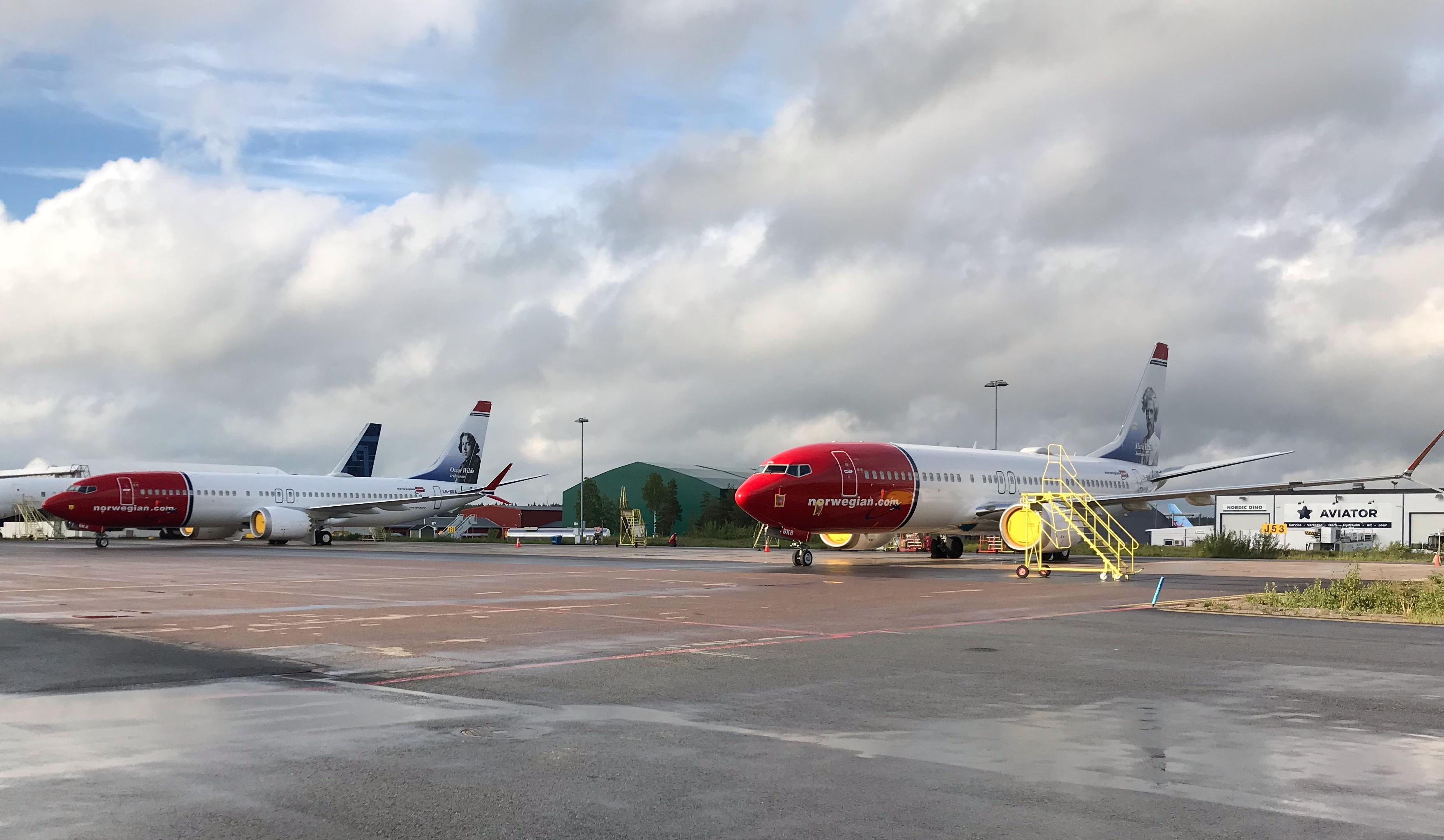EASA’s MAX Return Proposal Adds Nuisance Stick-Shaker Disabling Procedure

EASA has issued its draft parameters for clearing the Boeing 737 MAX to fly again, adding flight crew procedures and performance limitations to the FAA’s requirements, including a way for pilots to disable nuisance stall-warning alerts.
EASA’s proposed airworthiness directive (AD), issued Nov. 24 and open for public comment until Dec. 22, closely follows the FAA’s finalized requirements. But several differences between the two regulators led EASA to develop its own AD that addresses concerns it decided are critical to the grounded model’s safe return.
One significant immediate change is the stick-shaker stall-warning procedure, which helps address flight crew altering and reaction issues identified by regulators. The FAA rejected calls from several groups to include a procedure that calls for silencing a nuisance stick-shaker by pulling the applicable circuit breaker. Among the U.S. agency’s concerns is the added risk of pilots diverting their attention from the flight path and instruments as they turn to reach breaker panels behind them. But EASA determined the nuisance alerts, which can be caused by several problems, including incorrect angle-of-attack (AOA) sensor data, are enough of a distraction that it approved a step in the airspeed unreliable checklist.
“A nuisance stick-shaker may be deactivated at pilot’s discretion,” EASA’s proposed checklist language reads. “This improves recognition of a stall warning on the opposite side.” Disabling a breaker also removes increased column forces applied by the 737’s elevator feel shift, which changes the control-column feel-force to help a pilot identify a possible stall.
EASA proposes modifying the checklist and adding colored caps to each of the two stick-shaker circuit breakers, pointing to a Boeing service bulletin released in October as the basis for its requirements.
Even without a procedure included on a checklist, pilots can pull circuit breakers if they feel it is necessary. But some U.S. pilots expressed concern that the FAA differed from some of its peers on integrating the issue into the MAX’s revamped protocols.
“Most MAX operators, with the exception of those in the United States, have developed a procedure for pulling a circuit breaker in just such an occurrence, thereby reducing distractions and flight deck confusion,” the Southwest Airlines Pilots Association said in response to the FAA’s final AD. “No U.S. pilot should have to use captain’s emergency authority to accomplish this procedure when communication is near impossible due to noise and creating a significant distraction on the flight deck.”
EASA also will prohibit MAX-family aircraft from flying Required Navigation Performance—Authorization Required (RNP AR) approaches, “in order to eliminate the identified risk after single failure of an AOA sensor,” the agency said.
“EASA has gathered factual evidence that, upon single failure of an AOA sensor during a [RNP-AR] approach, all flight guidance that allows the pilot to guide the airplane along the intended flight path is lost, and therefore the crew is left with no means to ensure that the airplane’s trajectory can be maintained within the tolerated lateral deviation,” EASA explained in a related draft safety directive. “This condition, if not corrected, may constitute an unsafe condition in case the approach has been implemented because of terrain or obstacle constraints in the vicinity of the airfield.”
The RNP-AR ban is expected to change once EASA approves Boeing’s planned introduction of a third AOA source, which the European agency has requested, but not as a condition for the MAX family’s service return.
Other changes from the FAA’s final package include requiring disconnect of the autopilot at higher altitudes on approach during single-channel autopilot operations. This would give the pilots more safety margin in the event of certain failures.
EASA also made several minor changes to the updated 737-8 and 737-9 master minimum equipment list finalized by the FAA in April.
Beyond the circuit-breaker caps, EASA’s required changes to each MAX-family aircraft mirror the FAA’s requirements—flight control computer (FCC) software updates and modifications to wiring deemed to violate FAA regulations by not having enough separation. Pilot training is also the same, including about 5 hr. of transition training—3 hr. of simulator briefings and live scenarios and nearly 2 hr. of computer-based course work—for each pilot with 737 Next Generation or 737 MAX-family qualifications.
“I am confident that we have left no stone unturned in our assessment of the aircraft with its changed design approach,” EASA executive director Patrick Ky said. “Each time when it may have appeared that problems were resolved, we dug deeper and asked even more questions. The result was a thorough and comprehensive review of how this plane flies and what it is like for a pilot to fly the MAX, giving us the assurance that it is now safe to fly.”
EASA’s requirements would apply to operators in all 32 of the countries it regulates. It also will require “third-country” operators—non-EU operators approved to fly into EU-controlled airspace—to follow either the EASA or FAA requirements before operating 737-8s or 737-9s in its jurisdiction.
Software and training changes to the MAX family stemmed from investigations into the fatal accidents of Lion Air Flight 610 in October 2018 and Ethiopian Airlines Flight 302 in March 2019. Following the first accident, Boeing and the FAA agreed the MAX’s maneuvering characteristics augmentation system (MCAS) logic, including its reliance on a single AOA sensor and ability to automatically and repeatedly adjust the horizontal stabilizer based on one source of data, needed to be changed. The modified MCAS software adds system redundancy and ensures pilots can react quickly and easily to erroneous activations.
The second accident led regulators to ground the 385-aircraft MAX fleet indefinitely and expand their focus beyond MCAS, focusing on other aspects of the MAX FCC logic as well as pilot training. EASA’s scrutiny on other possible failures that relied on quick pilot reactions in Boeing’s assumptions helped convince the FAA to require a more extensive FCC software rework.






Comments
Classic case of the last few years of not the detail needed.
Bernard Biales